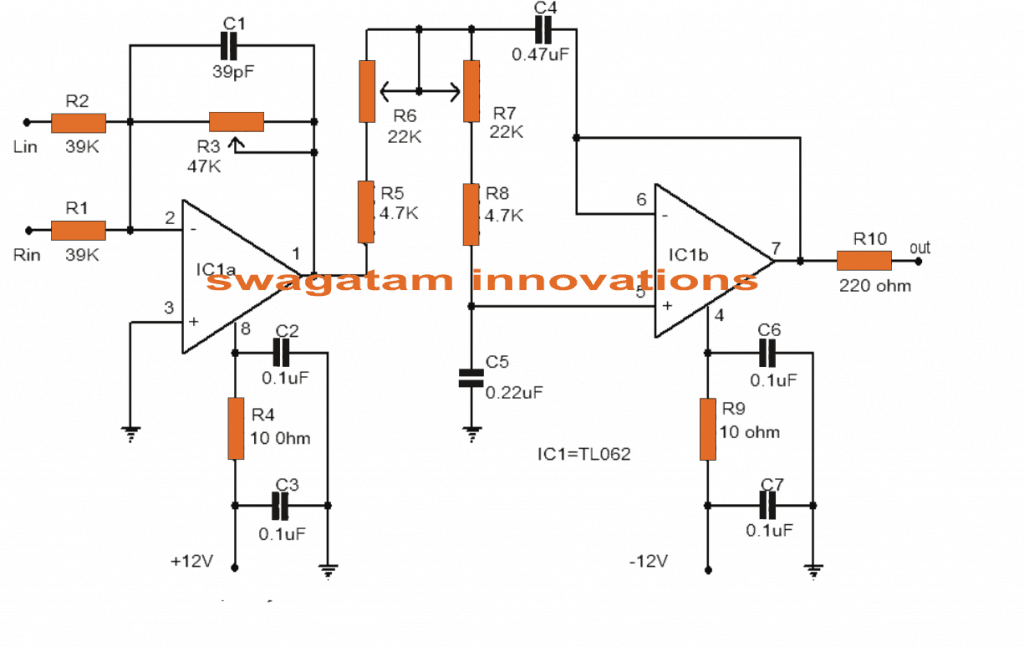Pass Band Filter

Pass band filter
In a receiver, a bandpass filter allows signals within a selected range of frequencies to be heard or decoded, while preventing signals at unwanted frequencies from getting through. A bandpass filter also optimizes thesignal-to-noise ratio (sensitivity) of a receiver.
What is passband and stopband for a filter?
Q: What is the passband and the stopband? A: Passband is the band of frequencies of the input signal that passes through the filter with an attenuation of less than 3 dB attenuation, while stopband is a band of frequencies of the input signal that are blocked or more highly attenuated by the filter.
How is band pass filter calculated?
Band Pass Filter using R, L and C Components The centre frequency of the band pass filter which is also termed as 'resonant peak' can be formulated by using the below equation: fc = 1/2π√(LC) Where L = inductance of an inductor whose units are in Henry (H). C = capacitance of a capacitor whose units are in Farad (F).
What is pass band in low-pass filter?
The passband is the region (frequency band) where the filter should pass its input through to its output with unit gain. For a low-pass filter (as shown), the passband reaches from a frequency of zero up to a certain frequency limit.
Why is it called a band pass filter?
There are applications where a particular band, or spread, or frequencies need to be filtered from a wider range of mixed signals. Filter circuits can be designed to accomplish this task by combining the properties of low-pass and high-pass into a single filter. The result is called a band-pass filter.
Does band pass filter remove noise?
Bandpass filters are used in a variety of applications, such as radios, TVs, and cell phones. They can be used to remove unwanted signals, such as noise, from a signal, or to select a particular range of frequencies for processing.
What is a bandpass filter example?
An example of an analogue electronic band-pass filter is an RLC circuit (a resistor–inductor–capacitor circuit). These filters can also be created by combining a low-pass filter with a high-pass filter.
What is the difference between passband and bandpass?
The passband of a receiver is the range of frequencies it can receive when it is tuned into the desired frequency (channel). A bandpass-filtered signal (that is, a signal with energy only in a passband), is known as a bandpass signal, in contrast to a baseband signal.
What is bandpass and bandwidth?
Passband bandwidth is the difference between the upper and lower cutoff frequencies of, for example, a band-pass filter, a communication channel, or a signal spectrum. Baseband bandwidth applies to a low-pass filter or baseband signal; the bandwidth is equal to its upper cutoff frequency.
What is bandpass frequency?
Generally, the dielectric band-pass filters can be used over the frequency range from 300 MHz to 100 GHz. For high-frequency applications, NRD waveguide filters (Figure 7.38) gain interests because of the extremely low-loss and low dielectric constant materials that can be used in the design.
What is Q factor of a filter?
It is defined as the ratio of the initial energy stored in the resonator to the energy lost in one radian of the cycle of oscillation. Q factor is alternatively defined as the ratio of a resonator's centre frequency to its bandwidth when subject to an oscillating driving force.
What is the value of pass band?
What is the value of pass band ripple in dB? Explanation: 1-δP is known as the pass band ripple or the pass band attenuation, and its value in dB is given as -20log(1-δP).
What is low pass band?
A low pass filter has two regions a pass band region and a stop band region. A typical low pass filter will have low insertion loss across the pass-band region until the cut-off frequency and higher attenuation after the cut-off frequency across the higher frequency range.
What is passband signal?
Passband signals are baseband signals elevated to a higher frequency in order to fit into particular slots in the spectrum. This chapter introduces different analog and digital modulation schemes as well as several approaches to multiplexing.
What is high pass band filter?
A high-pass filter (HPF) is an electronic filter that passes signals with a frequency higher than a certain cutoff frequency and attenuates signals with frequencies lower than the cutoff frequency. The amount of attenuation for each frequency depends on the filter design.
Is band pass filter active?
An active band pass filter is a 2nd Order type filter because it has “two” reactive components (two capacitors) within its circuit design.
What are the types of filters?
Four Major Types of Filters The four primary types of filters include the low-pass filter, the high-pass filter, the band-pass filter, and the notch filter (or the band-reject or band-stop filter).
What is Butterworth band pass filter?
The Butterworth filter is a type of signal processing filter designed to have a frequency response that is as flat as possible in the passband. It is also referred to as a maximally flat magnitude filter.
Which filter is best for noise removal?
You can use linear filtering to remove certain types of noise. Certain filters, such as averaging or Gaussian filters, are appropriate for this purpose. For example, an averaging filter is useful for removing grain noise from a photograph.
What does a bandpass filter sound like?
Up. We actually we get more high-end more brightness but we actually lose low-end at the same. Time.









Post a Comment for "Pass Band Filter"